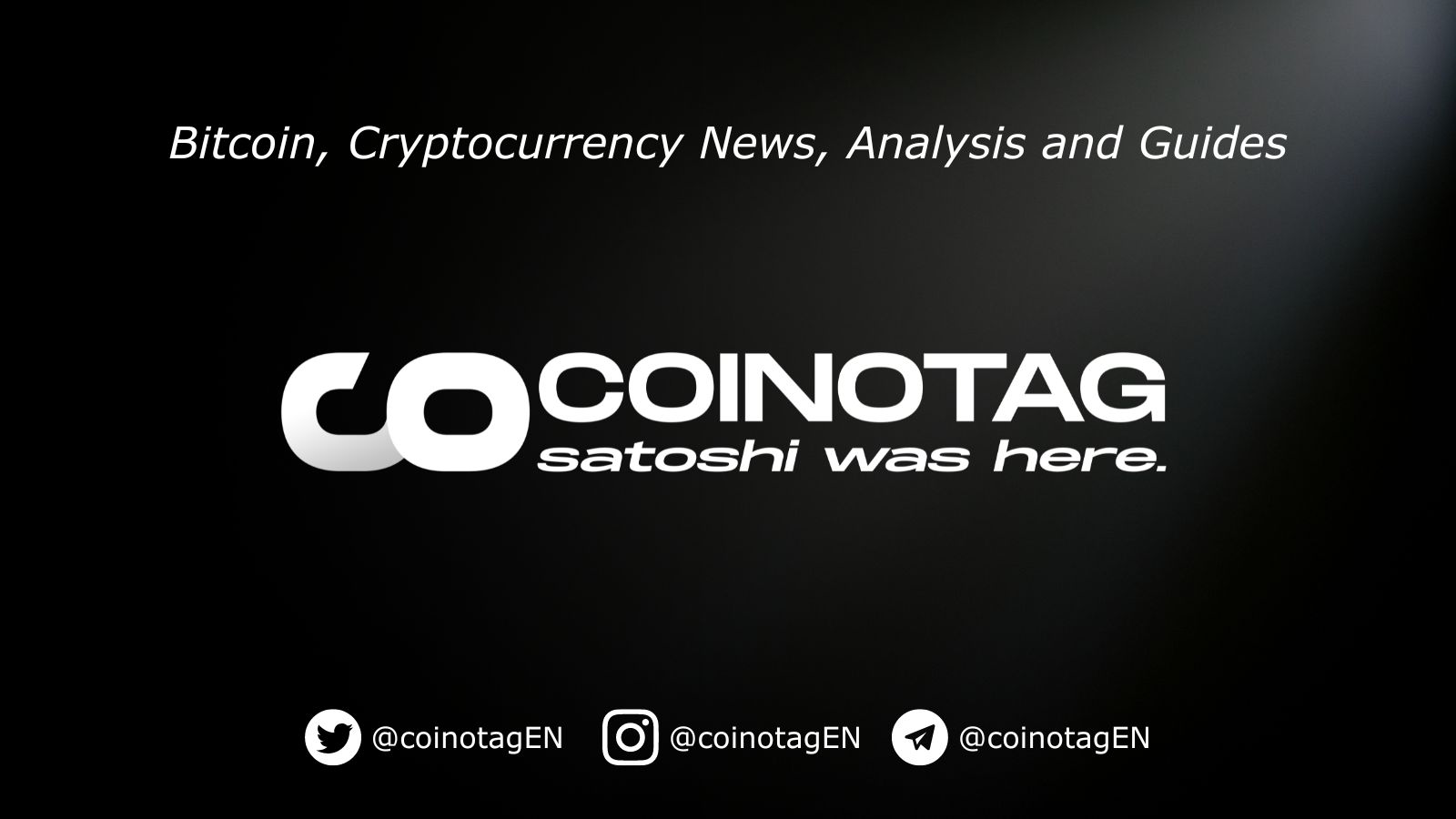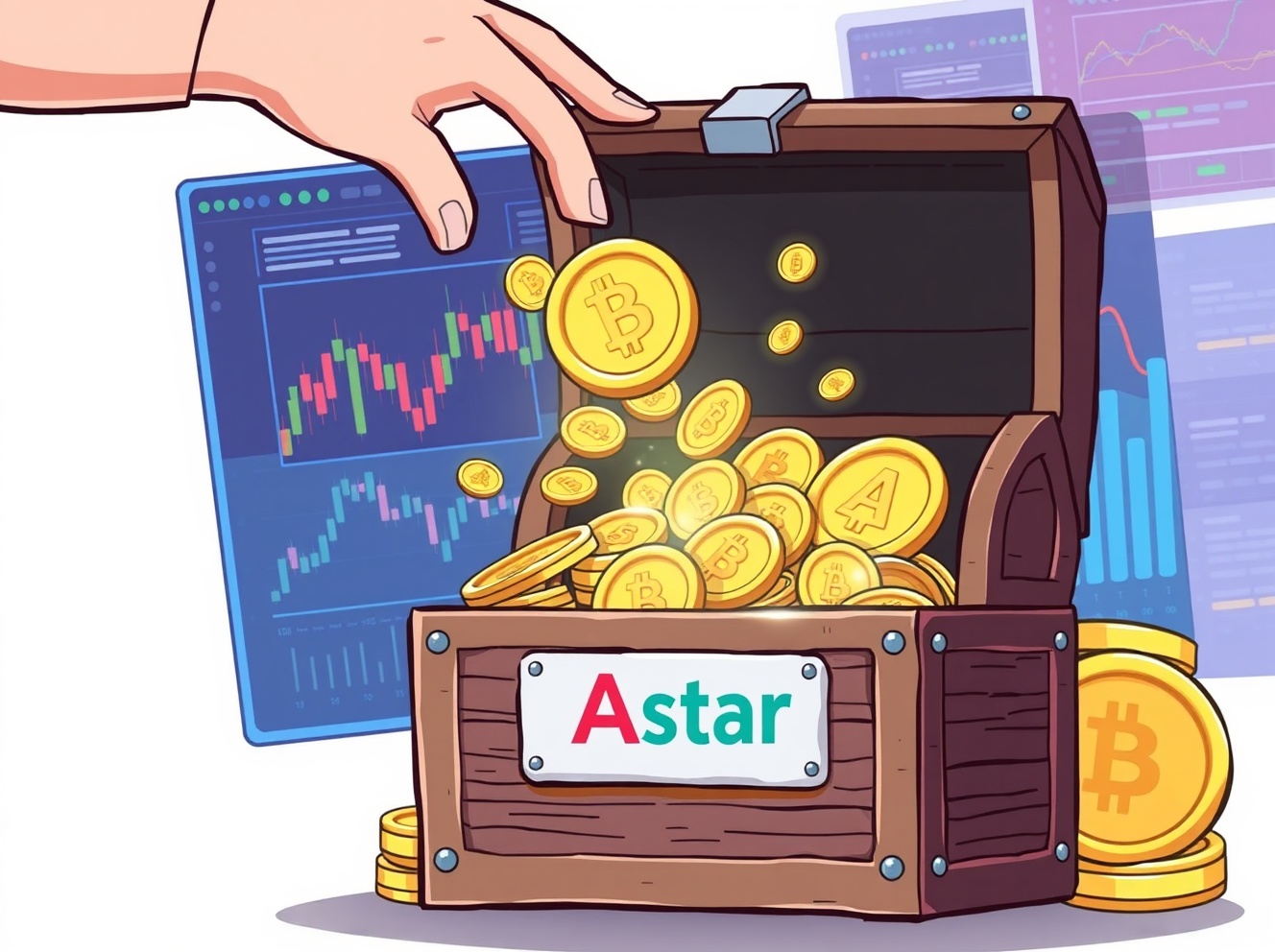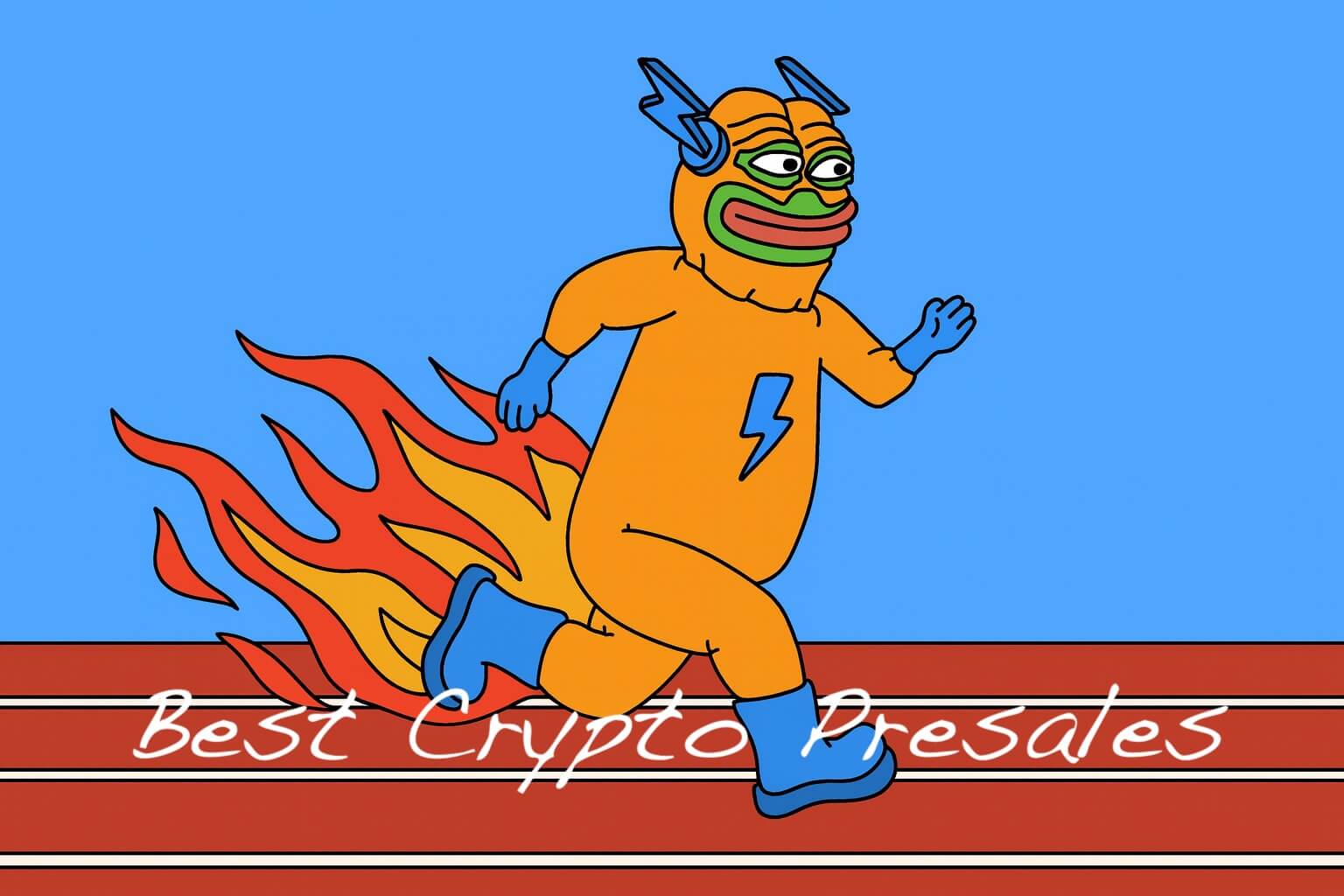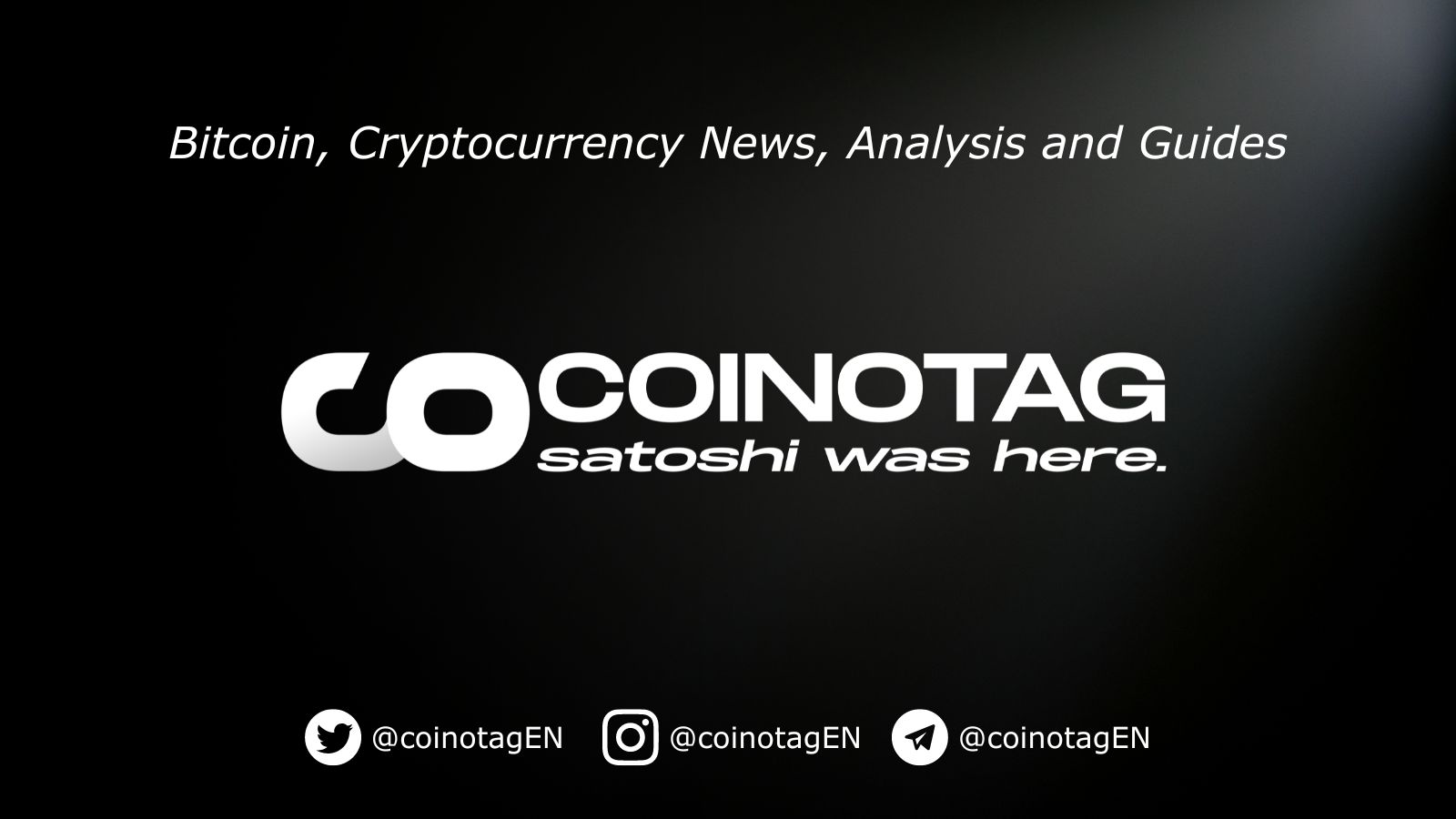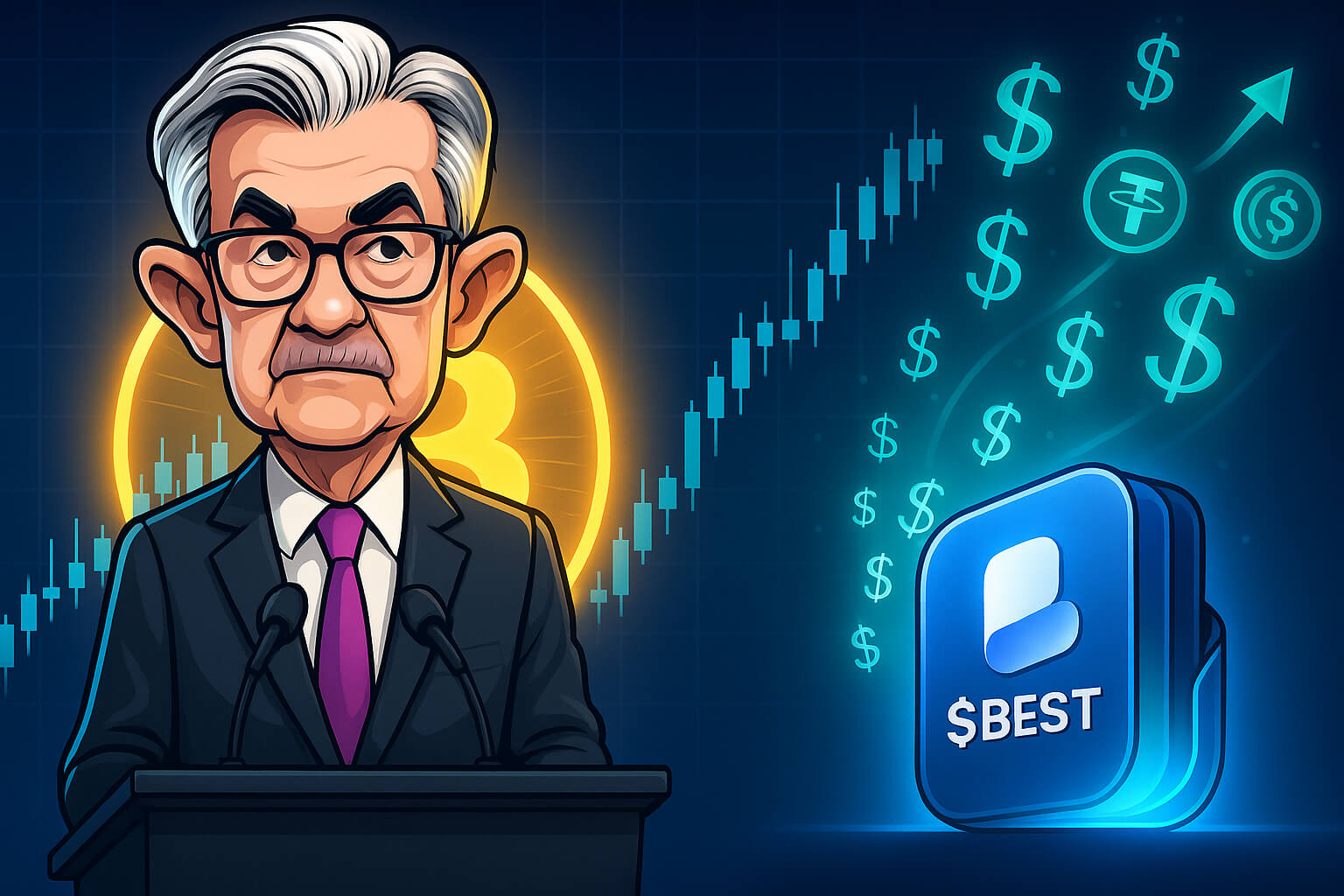
BitcoinWorld Asia FX’s Ascent: Crucial Shifts as US Dollar Edges Lower Amidst Trade and Federal Reserve Focus In the dynamic world of finance, currency movements often serve as a crucial barometer for global economic health and investor sentiment. For those immersed in the cryptocurrency space, understanding these macro shifts, particularly within the Global Forex Market , is more important than ever. The recent firming of Asia FX against a softening US Dollar is a prime example of such a shift, driven by complex interplay of factors including evolving economic policies, geopolitical tensions, and anticipation surrounding central bank decisions. This article will delve into the forces at play, examining how these developments could ripple through financial markets worldwide. What’s Driving the Strength in Asia FX? The resilience observed in Asia FX is not a singular phenomenon but a confluence of several factors. Many Asian economies have shown robust signs of recovery, attracting significant capital inflows. Investors are increasingly looking towards these regions for growth opportunities, bolstering local currencies. Furthermore, the proactive monetary policies adopted by various Asian central banks, coupled with relatively contained inflation pressures compared to Western counterparts, have provided a stable environment for currency appreciation. Economic Recovery: Stronger than expected economic data from key Asian nations, including manufacturing output and export growth, is signaling a healthy rebound. Capital Inflows: Foreign direct investment and portfolio investments are flowing into Asian markets, increasing demand for local currencies. Policy Stability: Many Asian central banks have maintained a cautious yet supportive stance, avoiding aggressive tightening that could destabilize their economies. Trade Surpluses: Continued strong export performance contributes to larger trade surpluses, which naturally strengthens national currencies. This collective strength highlights a growing confidence in Asia’s economic trajectory, making its currencies an attractive prospect in the current market climate. The US Dollar’s Retreat: Why the Softening Against Asia FX? While Asia FX has been firming, the US Dollar has experienced a period of softening. This downward pressure on the dollar is primarily attributed to shifting expectations regarding the Federal Reserve’s monetary policy and a general improvement in global risk sentiment. When investors feel more confident about the global economic outlook, they tend to move away from safe-haven assets like the dollar, seeking higher returns in riskier currencies and assets. Key factors contributing to the dollar’s recent dip include: Factor Impact on US Dollar Federal Reserve Expectations Anticipation of a more dovish stance or slower pace of rate hikes reduces the dollar’s yield advantage. Improved Risk Sentiment As global economic outlook improves, demand for safe-haven assets like the dollar decreases. Yield Differentials Narrowing interest rate gaps between the US and other major economies can diminish the dollar’s attractiveness. Inflation Outlook If US inflation shows signs of cooling, it could lead to less aggressive monetary policy, weighing on the dollar. These elements collectively paint a picture of a dollar facing headwinds, prompting investors to re-evaluate their positions and look for alternative currency exposures. Federal Reserve’s Pivotal Role: What to Expect from Policy Decisions? The Federal Reserve stands at the epicenter of global monetary policy, and its upcoming meeting is under intense scrutiny. The decisions made by the Fed have profound implications for the US Dollar , interest rates, and capital flows worldwide. Market participants are closely watching for signals regarding future interest rate adjustments, the pace of quantitative tightening, and any shifts in the Fed’s forward guidance on inflation and economic growth. A more hawkish stance, implying faster rate hikes or prolonged tightening, would typically strengthen the dollar. Conversely, a dovish pivot, suggesting a pause or even cuts in interest rates, would likely exert further downward pressure on the dollar. The Fed’s communication is equally vital; clear guidance can reduce market uncertainty, while ambiguous signals can fuel volatility. Potential outcomes and their currency implications: Aggressive Rate Hike: Boosts the US Dollar as it increases the attractiveness of dollar-denominated assets. Pause in Hikes: Likely to weaken the US Dollar as yield differentials narrow and risk sentiment improves. Dovish Forward Guidance: Signals a softer stance on future tightening, generally bearish for the dollar. Focus on Data Dependence: Creates uncertainty, leading to increased volatility as markets react to incoming economic data. The Fed’s careful balancing act between controlling inflation and supporting economic growth will be a defining factor for currency markets in the coming months. Navigating US-China Trade Dynamics: A Lingering Influence on Asia FX? The relationship between the United States and China remains a critical determinant for the Global Forex Market , particularly impacting Asia FX . While direct trade tensions might not always be front-page news, their underlying dynamics continue to shape investor sentiment, supply chains, and currency valuations. Any signs of escalation or de-escalation in US-China Trade relations can trigger significant market reactions. For Asian currencies, a stable or improving US-China trade environment is generally positive, as it fosters greater economic certainty and encourages cross-border investment. Conversely, renewed tariffs or trade disputes can lead to increased risk aversion, potentially weakening currencies in the region as capital seeks safer havens. Consider the ripple effects: Supply Chain Shifts: Companies diversifying away from China due to trade risks can impact other Asian economies, either positively or negatively depending on their role in new supply chains. Investor Confidence: Reduced trade friction typically boosts confidence in global growth, benefiting export-oriented Asian nations. Geopolitical Risks: Beyond trade, broader geopolitical tensions between the two superpowers can overshadow economic fundamentals, influencing currency flows. The intricate dance between these two economic giants will continue to be a key variable for currency traders and investors alike, especially those focused on Asian markets. Broader Implications for the Global Forex Market The combined effect of a firming Asia FX , a softening US Dollar , the impending Federal Reserve meeting, and the enduring influence of US-China Trade dynamics creates a complex yet fascinating landscape for the Global Forex Market . These intertwined factors are not just theoretical constructs; they translate into real-world opportunities and challenges for traders, businesses, and even the broader economy. For investors, this period calls for a nuanced approach. The relative strength of Asian currencies could present attractive investment opportunities, while the dollar’s performance will dictate the cost of imports and exports for many nations. Volatility is likely to remain elevated, requiring careful risk management and a keen eye on economic indicators and central bank pronouncements. Benefits of Understanding These Shifts: Informed Investment Decisions: Helps in allocating capital to regions or currencies poised for growth. Risk Mitigation: Allows for better hedging strategies against currency fluctuations. Strategic Business Planning: Businesses engaged in international trade can anticipate changes in operational costs and revenue. Challenges to Navigate: Increased Volatility: Rapid shifts can lead to unpredictable market movements. Geopolitical Uncertainty: Unforeseen events can quickly alter market sentiment. Divergent Central Bank Policies: Different approaches by central banks can create complex inter-currency relationships. The current environment underscores the interconnectedness of global finance. A shift in one major currency or economy inevitably sends ripples across the entire system, affecting everything from commodity prices to cryptocurrency valuations. Conclusion: Navigating the Shifting Sands of Global Currencies The current financial landscape, characterized by a strengthening Asia FX and a softer US Dollar , is a testament to the dynamic nature of the Global Forex Market . The upcoming Federal Reserve meeting and the ongoing nuances of US-China Trade relations are pivotal forces shaping this narrative. For investors and market participants, understanding these intricate relationships is not just an academic exercise but a practical necessity for making informed decisions and navigating potential volatilities. As these crucial shifts unfold, staying abreast of macro-economic developments will be key to identifying opportunities and managing risks in an ever-evolving global economy. Frequently Asked Questions (FAQs) Q1: How does the Federal Reserve’s policy affect the US Dollar ? The Federal Reserve’s monetary policy, particularly its decisions on interest rates and quantitative easing, significantly impacts the US Dollar . Higher interest rates typically make the dollar more attractive to investors, strengthening its value, while lower rates or a dovish stance can lead to depreciation. The Fed’s guidance on future policy also plays a crucial role in shaping market expectations. Q2: What role do US-China Trade relations play in the Global Forex Market ? US-China Trade relations are a significant factor influencing the Global Forex Market , especially for Asia FX . Positive developments can boost global risk sentiment, leading to stronger demand for riskier assets and currencies, including those in Asia. Conversely, trade disputes or geopolitical tensions can increase risk aversion, prompting investors to seek safe-haven currencies like the US Dollar , potentially weakening Asian currencies. Q3: Which specific currencies are included in Asia FX that are currently firming? When discussing Asia FX , we generally refer to a basket of currencies from various Asian economies. Currencies that have shown recent strength include the Japanese Yen , Chinese Yuan , South Korean Won , Indian Rupee , and the Singapore Dollar , among others. Their individual performance is influenced by local economic conditions, central bank policies, and regional trade dynamics. Q4: How does the performance of the Global Forex Market impact cryptocurrency? The Global Forex Market significantly impacts cryptocurrency by influencing overall market liquidity, investor sentiment, and capital flows. A stronger US Dollar can sometimes exert downward pressure on risk assets, including cryptocurrencies, as investors move towards safety. Conversely, a weaker dollar or increased risk appetite in traditional markets can free up capital for crypto investments. Macroeconomic stability, reflected in currency markets, often provides a more favorable environment for crypto growth and adoption. To learn more about the latest Forex market trends, explore our article on key developments shaping the US Dollar and global liquidity. This post Asia FX’s Ascent: Crucial Shifts as US Dollar Edges Lower Amidst Trade and Federal Reserve Focus first appeared on BitcoinWorld .
Bitcoin World
You can visit the page to read the article.
Source: Bitcoin World
Disclaimer: The opinion expressed here is not investment advice – it is provided for informational purposes only. It does not necessarily reflect the opinion of BitMaden. Every investment and all trading involves risk, so you should always perform your own research prior to making decisions. We do not recommend investing money you cannot afford to lose.
Polygon MATIC Price Prediction: Unlocking Astonishing Growth Towards $1 by 2030

BitcoinWorld Polygon MATIC Price Prediction: Unlocking Astonishing Growth Towards $1 by 2030 Are you looking for a comprehensive Polygon MATIC price prediction ? The world of cryptocurrency is dynamic, and investors are always seeking insights into the future potential of their assets. Polygon (MATIC), a prominent layer-2 scaling solution for Ethereum, has captured significant attention. Its mission to enhance Ethereum’s scalability and user experience positions it as a key player in the blockchain ecosystem. This article dives deep into the potential trajectory of MATIC, exploring whether its price can truly surge to $1 in the coming years. We will analyze its historical performance, technological advancements, market factors, and expert forecasts to provide a clear picture of what the future might hold for this innovative cryptocurrency. Understanding Polygon (MATIC) and Its Role in the Polygon Crypto Future Polygon, formerly known Matic Network, is a decentralized Ethereum scaling platform that enables developers to build scalable user-friendly dApps with low transaction fees without sacrificing security. It acts as a layer-2 solution, meaning it operates on top of the Ethereum blockchain to address its inherent limitations, such as high gas fees and slow transaction speeds. Polygon aims to transform Ethereum into a multi-chain system, similar to Polkadot or Avalanche, but with Ethereum’s security, open-endedness, and vibrancy. At its core, Polygon utilizes a Proof-of-Stake (PoS) consensus mechanism, allowing for faster and cheaper transactions compared to Ethereum’s mainnet. The native cryptocurrency, MATIC, plays a crucial role within this ecosystem. It is used for network fees, staking to secure the network, and participating in governance decisions. Understanding these fundamentals is essential for any informed MATIC price analysis . Key components contributing to the robust Polygon crypto future include: Polygon PoS Chain: The flagship product, a sidechain compatible with Ethereum, offering high throughput and low fees. Polygon zkEVM: A groundbreaking zero-knowledge Ethereum Virtual Machine that aims to provide even greater scalability and security while maintaining full EVM compatibility. Polygon Supernets: A framework for building application-specific blockchains, allowing for tailored solutions and increased customization for various use cases. Developer Ecosystem: A vibrant community of developers building decentralized applications (dApps) across various sectors, including DeFi, NFTs, and gaming. These technological advancements and the continuous expansion of its ecosystem are pivotal in shaping the long-term outlook and potential value of MATIC. Factors Influencing MATIC Price Analysis and Market Dynamics The price of MATIC, like any other cryptocurrency, is influenced by a complex interplay of various factors. A thorough MATIC price analysis requires considering both internal developments within the Polygon ecosystem and broader Cryptocurrency market trends . Here are some of the primary drivers: Adoption and Partnerships: One of the most significant factors is the rate at which dApps, enterprises, and users adopt Polygon. Major partnerships, such as those with Disney , Starbucks , and Reddit, significantly boost Polygon’s visibility and utility, driving demand for MATIC. Increased usage translates to higher network fees, which in turn can positively impact MATIC’s value. Technological Advancements and Upgrades: Continuous innovation, such as the rollout of zkEVM , Supernets, and other scaling solutions, enhances Polygon’s capabilities and competitive edge. Successful implementation of these upgrades can attract more developers and users, strengthening the ecosystem and supporting MATIC’s price. Overall Cryptocurrency Market Trends: MATIC’s price often correlates with the broader crypto market, particularly with Bitcoin ( BTC ) and Ethereum ( ETH ). A bull market typically lifts most altcoins, including MATIC, while a bear market can lead to significant price corrections. Macroeconomic factors, such as interest rate changes, inflation, and global economic stability, also play a role in influencing investor sentiment across the entire market. Competition: Polygon operates in a highly competitive landscape with other layer-2 solutions (e.g., Arbitrum, Optimism) and alternative layer-1 blockchains (e.g., Solana, Avalanche). The ability of Polygon to innovate and maintain its competitive advantage is crucial for its long-term success and MATIC’s price stability. Regulatory Environment: Evolving cryptocurrency regulations worldwide can impact investor confidence and market liquidity. Favorable regulations could foster growth, while restrictive policies could introduce uncertainty and pressure on prices. Monitoring these factors is essential for anyone attempting to project the future value of MATIC. MATIC Price Forecast: Historical Performance and Key Trends To provide a credible MATIC price forecast , it’s vital to examine its past performance. Polygon (MATIC) has shown remarkable growth since its inception, experiencing significant rallies and corrections, typical of volatile crypto assets. MATIC launched in 2019 and initially traded at very low values. Its major price surge occurred during the 2021 bull run, driven by increasing adoption of its scaling solutions and the broader market enthusiasm for decentralized finance (DeFi) and NFTs. MATIC reached its all-time high of approximately $2.92 in December 2021. Following this peak, MATIC, like most cryptocurrencies, entered a bear market phase in 2022, experiencing a substantial price decline. This period tested investor resilience but also highlighted Polygon’s fundamental strengths as it continued to develop and attract partnerships even during market downturns. Key observations from MATIC’s historical trends: Correlation with Ethereum: Given its role as an Ethereum scaling solution, MATIC’s price often moves in tandem with Ethereum’s performance. Positive developments for Ethereum, such as upgrades or increased network activity, frequently benefit Polygon. Ecosystem Growth: Periods of significant growth in Polygon’s dApp ecosystem, user base, and total value locked (TVL) on its network have historically coincided with positive price movements for MATIC. Market Cycles: MATIC is susceptible to broader cryptocurrency market cycles. Understanding these cycles, often influenced by Bitcoin’s halving events and macroeconomic conditions, is crucial for long-term forecasting. While past performance is not indicative of future results, it provides valuable context for understanding MATIC’s behavior and potential reactions to market forces. Analyzing these trends helps in formulating a more informed MATIC price forecast for the years to come. Polygon MATIC Price Prediction: Expert Insights for 2025-2030 Predicting cryptocurrency prices with absolute certainty is impossible due to market volatility and unforeseen events. However, by analyzing expert opinions, technological roadmaps, and market sentiment, we can form a reasonable Polygon MATIC price prediction for the future. The question of whether MATIC can reach $1 or even surpass it is a common point of discussion among investors. Polygon MATIC Price Prediction 2025 By 2025, the cryptocurrency market is anticipated to have recovered significantly from recent downturns, potentially entering a new bull cycle. Polygon’s continued development and adoption are expected to play a crucial role. The success of zkEVM and Supernets could solidify its position as a leading scaling solution. If the overall market experiences strong growth, fueled by institutional adoption and clearer regulatory frameworks, MATIC could see substantial gains. Many analysts project MATIC to trade within a range of $0.80 to $1.50, with optimistic scenarios pushing it higher if major partnerships and technological breakthroughs occur. Polygon MATIC Price Prediction 2026 Moving into 2026, the momentum from 2025 could carry over. Polygon’s ecosystem would likely be more mature, with a broader array of dApps and enterprises leveraging its technology. The increasing demand for scalable and cost-effective blockchain solutions will continue to drive Polygon’s utility. Assuming sustained development and a generally bullish market, a conservative MATIC price forecast for 2026 might place it between $1.20 and $2.20. Factors such as Ethereum’s own scalability improvements (e.g., sharding) could either complement or create competition for Polygon, influencing its trajectory. Polygon MATIC Price Prediction 2027-2030 The long-term outlook for MATIC, stretching towards 2030, depends heavily on its ability to maintain innovation and adapt to an evolving blockchain landscape. By this time, the digital economy is expected to be even more integrated with blockchain technology. Polygon’s vision of a multi-chain Ethereum ecosystem could be fully realized, making it an indispensable infrastructure layer. If Polygon successfully navigates competitive pressures and continues to attract significant developer and user activity, reaching and surpassing the $1 mark seems highly plausible. Here’s a general outlook for MATIC’s potential price ranges: Year Minimum Price Average Price Maximum Price 2025 $0.75 $1.10 $1.60 2026 $1.00 $1.55 $2.30 2027 $1.30 $2.00 $3.00 2028 $1.70 $2.60 $4.00 2029 $2.20 $3.30 $5.00 2030 $2.80 $4.20 $6.50+ These figures are speculative and represent potential scenarios based on current market understanding and projected growth. Achieving these targets would require sustained positive Cryptocurrency market trends , continuous innovation from Polygon Labs , and widespread adoption. Navigating the Polygon Crypto Future: Challenges and Opportunities The journey towards a thriving Polygon crypto future is not without its hurdles, but it is also filled with immense opportunities. Understanding these aspects is crucial for any investor considering MATIC. Challenges for Polygon (MATIC): Intense Competition: The layer-2 scaling space is highly competitive, with strong contenders like Arbitrum, Optimism, and zkSync continually innovating. Polygon must maintain its technological edge and ecosystem growth to stay ahead. Ethereum’s Own Scaling: As Ethereum itself implements further scaling solutions (e.g., sharding), Polygon will need to adapt its strategy to remain relevant and complementary rather than redundant. Regulatory Uncertainty: The global regulatory landscape for cryptocurrencies is still evolving. Unfavorable regulations in key markets could impact Polygon’s operations and adoption. Market Volatility: Cryptocurrencies are inherently volatile assets. External macroeconomic factors, geopolitical events, and sudden shifts in investor sentiment can lead to rapid price fluctuations for MATIC. Security Concerns: While Polygon has a strong security track record, any blockchain network is potentially vulnerable to exploits. Maintaining robust security measures is paramount for user trust and network integrity. Opportunities for Polygon (MATIC): Enterprise Adoption: Polygon’s focus on enterprise-grade solutions and partnerships with major brands like Disney and Starbucks presents a massive opportunity for real-world utility and widespread adoption. DeFi and Gaming Growth: The decentralized finance (DeFi) and blockchain gaming sectors are rapidly expanding. Polygon’s low fees and high throughput make it an ideal platform for these applications, driving demand for MATIC. Emerging Markets: Developing regions often face challenges with traditional financial systems. Polygon’s accessibility and efficiency can cater to these markets, fostering financial inclusion. Interoperability: Polygon’s commitment to creating an internet of blockchains through its various solutions positions it well for a future where seamless communication between different chains is essential. Decentralization and Governance: As the network matures, increased decentralization and community-driven governance through MATIC staking will enhance its resilience and appeal. Investors should weigh these challenges and opportunities carefully when conducting their own MATIC price analysis and considering their long-term investment strategy. Is MATIC a Good Investment? Weighing the Pros and Cons When considering any cryptocurrency, including MATIC, as an investment, it is crucial to look at both its strengths and weaknesses. This balanced approach helps in making informed decisions, especially when evaluating a long-term Polygon MATIC price prediction . Pros of Investing in MATIC: Strong Fundamentals: Polygon addresses a critical need for scalability and efficiency within the Ethereum ecosystem, which remains the dominant smart contract platform. Robust Technology Stack: With its PoS chain, zkEVM , and Supernets, Polygon offers a diverse and powerful suite of scaling solutions, positioning it for future growth. Growing Ecosystem and Adoption: Polygon boasts a vibrant developer community and an impressive list of partnerships with major global brands, indicating real-world utility and increasing demand. Active Development Team: Polygon Labs consistently pushes out updates and innovations, demonstrating a commitment to the platform’s long-term success. Deflationary Tokenomics: The implementation of EIP-1559 on Polygon PoS chain introduces a burning mechanism for MATIC tokens, which can reduce supply over time and potentially increase scarcity. Cons of Investing in MATIC: Intense Competition: The layer-2 space is crowded, and Polygon faces stiff competition from other well-funded and innovative projects. Market Volatility: Like all cryptocurrencies, MATIC is subject to extreme price swings, which can lead to significant losses for investors who are not prepared for such volatility. Regulatory Risks: Potential future regulations could impact Polygon’s operations or the broader crypto market, affecting MATIC’s value. Reliance on Ethereum: While beneficial, Polygon’s close ties to Ethereum mean its fate is somewhat linked to Ethereum’s performance and developments. Centralization Concerns: Some critics argue about the degree of decentralization in Polygon’s PoS chain, although efforts are continuously being made to enhance it. Ultimately, whether MATIC is a good investment depends on an individual’s risk tolerance, investment goals, and belief in the long-term vision of Polygon and the broader crypto market. A careful MATIC price analysis considering these points is essential. Will MATIC Price Surge to $1? A Deep Dive into the Possibility The question, “Will MATIC price surge to $1?” is at the forefront of many investors’ minds. Given its current price fluctuations, reaching and sustaining the $1 mark would represent a significant milestone and a return to previous highs for MATIC. Let’s examine the factors that could enable this surge, keeping in mind the dynamic nature of Cryptocurrency market trends . For MATIC to consistently trade above $1, several key conditions would likely need to align: Strong Bull Market Resurgence: A general upswing in the cryptocurrency market, often led by Bitcoin and Ethereum, would create a favorable environment for altcoins like MATIC to appreciate. Renewed investor confidence and increased capital inflow into the crypto space are crucial. Continued Ecosystem Growth and Adoption: Polygon needs to maintain and accelerate its adoption rate. This means attracting more developers, dApps, and especially large enterprises to build and operate on its network. Every new major partnership or successful dApp launch adds utility and demand for MATIC. Successful Rollout of zkEVM and Other Innovations: The successful and widespread adoption of Polygon’s advanced scaling solutions, particularly the zkEVM , would be a game-changer. If zkEVM proves to be a highly efficient and secure scaling solution, it could draw significant liquidity and activity from Ethereum ‘s mainnet. Increased Network Activity and Revenue: Higher transaction volumes, more active users, and increased total value locked (TVL) on Polygon’s various chains would signal a healthy and growing ecosystem. This fundamental growth often translates to increased demand for MATIC, as it’s used for gas fees and staking. Favorable Regulatory Environment: Clear and supportive regulations globally would reduce uncertainty, encourage institutional investment, and allow blockchain projects like Polygon to flourish without fear of sudden policy shifts. Reduced Competition or Maintained Edge: While competition is fierce, if Polygon can consistently outperform its rivals in terms of technology, adoption, and user experience, it will solidify its market position and attract more capital. Considering the current state of the market and Polygon’s ongoing developments, reaching $1 is certainly within the realm of possibility, especially within the 2025-2026 timeframe, as indicated by various MATIC price forecast models. However, it will require a confluence of positive factors and a general improvement in overall Cryptocurrency market trends . Investors should remain realistic about the journey, which may include periods of consolidation or correction. Conclusion: What Lies Ahead for Polygon (MATIC)? Polygon (MATIC) stands as a foundational layer in the quest for a scalable and efficient blockchain future. Our comprehensive Polygon MATIC price prediction for 2025-2030 suggests a strong potential for growth, with the $1 mark being a highly achievable milestone under favorable market conditions. The platform’s relentless innovation, particularly with its zkEVM and Supernets, combined with strategic partnerships and a thriving developer ecosystem, positions it for long-term success. While challenges such as intense competition and market volatility remain, Polygon’s proactive approach to solving Ethereum’s scaling issues makes it a compelling asset within the broader Cryptocurrency market trends . For investors, a careful MATIC price analysis reveals a project with robust fundamentals and significant upside potential. The journey to $1 and beyond will likely be characterized by periods of both rapid ascent and consolidation, reflecting the inherent dynamism of the crypto space. As the digital economy continues to evolve, Polygon’s role in facilitating decentralized applications and bringing blockchain technology to the masses will only grow in importance. Those looking to understand the intricate landscape of the Polygon crypto future will find that MATIC remains a project worth watching closely. Frequently Asked Questions (FAQs) About Polygon (MATIC) What is Polygon (MATIC)? Polygon is a layer-2 scaling solution for Ethereum that aims to improve its scalability, transaction speeds, and cost-efficiency. It provides a framework for building and connecting Ethereum-compatible blockchain networks. Its native cryptocurrency is MATIC, used for network fees, staking, and governance. Polygon Labs is the team driving its development. Is MATIC a good investment? MATIC is considered a promising investment by many due to its strong fundamentals, active development, growing ecosystem, and its critical role in scaling Ethereum. However, like all cryptocurrencies, it carries significant risk due to market volatility. Investors should conduct their own research and consider their risk tolerance before investing. What drives MATIC’s price? MATIC’s price is driven by several factors, including overall Cryptocurrency market trends , adoption of Polygon’s technology by users and enterprises (e.g., Disney , Starbucks ), technological advancements like zkEVM , network activity, competition, and regulatory developments. Positive news and increased utility typically lead to price appreciation. Can MATIC reach $1? Yes, many analysts believe MATIC can reach and potentially surpass $1, especially within the 2025-2030 timeframe. This would depend on sustained market growth, continued Polygon ecosystem expansion, successful implementation of its scaling solutions, and favorable macroeconomic conditions. Historical performance and current MATIC price forecast models support this possibility. What are the risks associated with MATIC? Key risks include intense competition from other scaling solutions, the inherent volatility of the cryptocurrency market, potential changes in regulatory environments, and the possibility of technical vulnerabilities. Investors should be aware that the value of MATIC can fluctuate significantly. To learn more about the latest crypto market trends, explore our article on key developments shaping Bitcoin, Ethereum, and other major cryptocurrencies’ institutional adoption. This post Polygon MATIC Price Prediction: Unlocking Astonishing Growth Towards $1 by 2030 first appeared on BitcoinWorld . Bitcoin World

US Giant S&P Global Gives Bitcoin Bull Startegy a Junk Rating! Is It Actually a Victory?
American credit rating agency S&P Global has given Strategy (formerly MicroStrategy), the largest institutional Bitcoin (BTC) investor, a B- rating, meaning junk. Accordingly, S&P Global Ratings issued a B- junk credit rating to Strategy, indicating that the company is in the “high risk” category. The agency cited the company`s heavy reliance on Bitcoin, its weak capital structure relative to its risk profile, and its fragile US dollar liquidity as justification for its rating. S&P Global noted that Strategy`s business model (buying and holding Bitcoin as a reserve asset financed through equity and debt) provides investors with indirect exposure to Bitcoin without actually holding it. However, S&P added that the Strategy`s Bitcoin concentration continues to dominate its credit profile and introduces risks associated with regulatory actions and market volatility. S&P Global also said it is unlikely to upgrade Stategy`s rating in the next 12 months. It added that it could downgrade the rating further if Bitcoin prices fall sharply or the company`s access to capital markets weakens. Although S&P gave Global Strategy a rather negative rating, the company`s founder, Michael Saylor, pointed out that Strategy was the first Bitcoin treasury company to receive a rating from a major credit rating agency. At this point, the cryptocurrency market is more concerned about Strategy`s rating from such a major credit agency than the junk rating it received, calling it a “victory.” Economists believe that for a company in the US to receive a rating from a major rating agency, or even to even reach their analysts` desk, is considered a significant development. Economists also noted that many large funds and companies prefer to invest in companies with rated ratings. According to economists, despite Strategy receiving a junk credit rating from S&P Global Ratings, the rating has placed it in the investment-grade category. S&P Global Ratings previously gave the same B- rating to decentralized stablecoin issuer Sky Protocol (formerly MakerDAO). *This is not investment advice. Continue Reading: US Giant S&P Global Gives Bitcoin Bull Startegy a Junk Rating! Is It Actually a Victory? Bitcoin World

